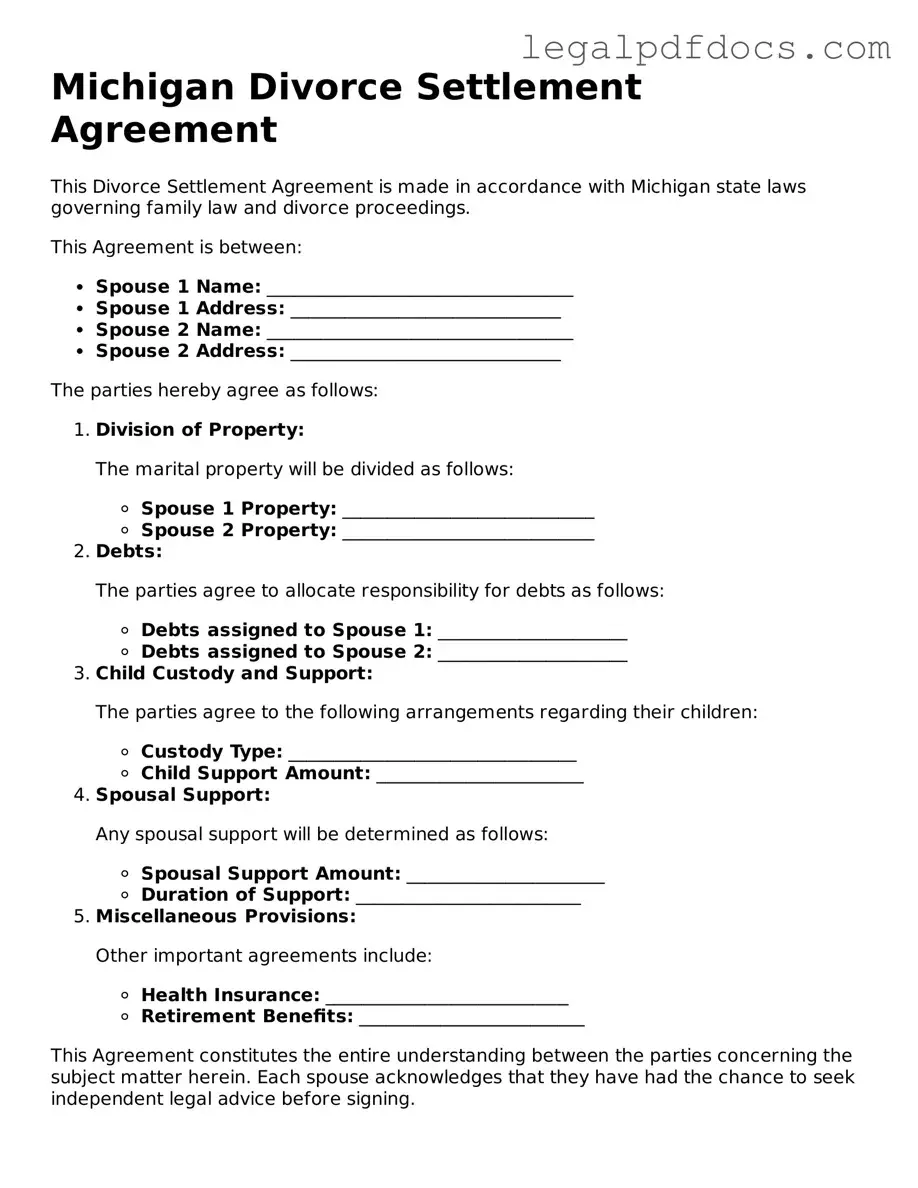Official Divorce Settlement Agreement Form for Michigan
The Michigan Divorce Settlement Agreement form is a legal document that outlines the terms and conditions agreed upon by both parties during a divorce. This form helps ensure that issues such as property division, child custody, and support payments are clearly defined and legally binding. Understanding this form is essential for a smooth divorce process, so take the next step by filling it out through the button below.
Open Divorce Settlement Agreement Editor Here
